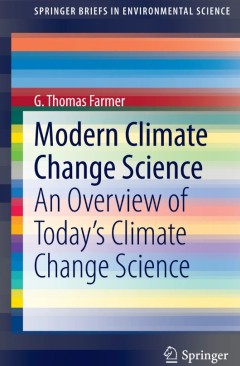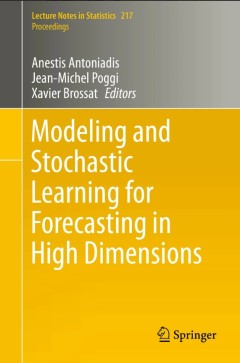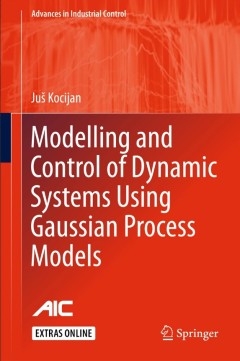Filter by

Modern Climate Change Science
Composed of two extensive sections, this book surveys important work in climate change science, mainly in the United States, and introduces contributions to the body of science that have arrived on the scene between January 2013 and February 2014. The opening section offers a broad examination of contemporary climate change science, with subsections on the Intergovernmental Panel on Climate …
- Edition
- 1
- ISBN/ISSN
- 978-3-319-09221-8
- Collation
- XXV, 106
- Series Title
- SpringerBriefs in Environmental Science
- Call Number
- -

Multicriteria Decision Analysis in Geographic Information Science
This book is intended for the GIS Science and Decision Science communities. It is primarily targeted at postgraduate students and practitioners in GIS and urban, regional and environmental planning as well as applied decision analysis. It is also suitable for those studying and working with spatial decision support systems. The main objectives of this book are to effectivley integrate Multicrit…
- Edition
- 1
- ISBN/ISSN
- 978-3-662-50152-8
- Collation
- XV
- Series Title
- Advances in Geographic Information Science
- Call Number
- -

Beginning Big Data with Power BI and Excel 2013
In Beginning Big Data with Power BI and Excel 2013, you will learn to solve business problems by tapping the power of Microsoft’s Excel and Power BI to import data from NoSQL and SQL databases and other sources, create relational data models, and analyze business problems through sophisticated dashboards and data-driven maps. While Beginning Big Data with Power BI and Excel 2013 covers pro…
- Edition
- -
- ISBN/ISSN
- 978-1-4842-0529-7
- Collation
- XIX, 246
- Series Title
- -
- Call Number
- 004

Modern Logic 1850-1950, East and West
This book presents diverse topics in mathematical logic such as proof theory, meta-mathematics, and applications of logic to mathematical structures. The collection spans the first 100 years of modern logic and is dedicated to the memory of Irving Anellis, founder of the journal 'Modern Logic', whose academic work was essential in promoting the algebraic tradition of logic, as represented by Ch…
- Edition
- 1
- ISBN/ISSN
- 978-3-319-24754-0
- Collation
- XIII, 258
- Series Title
- Studies in Universal Logic
- Call Number
- -

Beginning App Development with Parse and PhoneGap
Beginning App Development with Parse and PhoneGap teaches you how to start app development with Parse and PhoneGap: free and open source software. Using the building block languages of the web--HTML, JavaScript, and CSS--you’ll be on your way to creating a fully working product with minimal effort as fast as possible. With over 25 years' of combined experience, the authors make daunting tasks…
- Edition
- -
- ISBN/ISSN
- 978-1-4842-0235-7
- Collation
- XXV, 300
- Series Title
- -
- Call Number
- 004

Beginning Android Wearables : With Android Wear and Google Glass SDKs
Beginning Android Wearables gives you the skills you need to make effective apps for Android Wear-based smartwatches, fitness bracelets, connected home wearable controllers, and Google Glass. Delight your users by giving them access to the information they'll need at the tips of their fingers. This book is very practical and contains many examples that not only show you how to write code for…
- Edition
- -
- ISBN/ISSN
- 978-1-4842-0517-4
- Collation
- XXIII, 512
- Series Title
- -
- Call Number
- 004

Modeling and Stochastic Learning for Forecasting in High Dimensions
The chapters in this volume stress the need for advances in theoretical understanding to go hand-in-hand with the widespread practical application of forecasting in industry. Forecasting and time series prediction have enjoyed considerable attention over the last few decades, fostered by impressive advances in observational capabilities and measurement procedures. On June 5-7, 2013, an internat…
- Edition
- 1
- ISBN/ISSN
- 978-3-319-18731-0
- Collation
- X
- Series Title
- Lecture Notes in Statistics
- Call Number
- -

Evolution of Lightweight Structures Analyses and Technical Applications
This volume contains studies on the evolution and function of lightweight constructions of planktonic and other organisms, and examples of how they can be used to create new solutions for radical innovations of lightweight constructions for technological application. The principles and underlying processes responsible for evolution and biodiversity of marine plankton organisms are highly releva…
- Edition
- -
- ISBN/ISSN
- 978-94-017-9398-8
- Collation
- 39 b/w illustrations, 82 illustrations in colour
- Series Title
- -
- Call Number
- -

Beginning Android
Get started in creating marketable apps for the burgeoning Android market. Begin your journey by learning the essentials of programming for phones and tables that are built around Google's wildly-successful Android platform. Beginning Android, Fifth Edition is fresh with details on the latest iteration of the Android 5 and earlier versions. Google’s Android operating-system has taken the i…
- Edition
- -
- ISBN/ISSN
- 978-1-4302-4687-9
- Collation
- XXV, 411
- Series Title
- -
- Call Number
- 004

Modelling and Control of Dynamic Systems Using Gaussian Process Models
This monograph opens up new horizons for engineers and researchers in academia and in industry dealing with or interested in new developments in the field of system identification and control. It emphasizes guidelines for working solutions and practical advice for their implementation rather than the theoretical background of Gaussian process (GP) models. The book demonstrates the potential of …
- Edition
- 1
- ISBN/ISSN
- 978-3-319-21020-9
- Collation
- XVI, 267
- Series Title
- Advances in Industrial Control
- Call Number
- -
 Computer Science, Information & General Works
Computer Science, Information & General Works  Philosophy & Psychology
Philosophy & Psychology  Religion
Religion  Social Sciences
Social Sciences  Language
Language  Pure Science
Pure Science  Applied Sciences
Applied Sciences  Art & Recreation
Art & Recreation  Literature
Literature  History & Geography
History & Geography